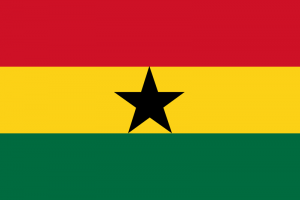Difference between revisions of "Language/Twi/Grammar/Adjectives"
m (Quick edit) |
m (Quick edit) |
||
| Line 32: | Line 32: | ||
<hr>If you have any questions, please ask them in the comments section below.<br>Feel free to edit this wiki page if you think it can be improved. 😎 | <hr>If you have any questions, please ask them in the comments section below.<br>Feel free to edit this wiki page if you think it can be improved. 😎 | ||
==Related Lessons== | |||
* [[Language/Twi/Grammar/Conditional-Mood|Conditional Mood]] | |||
* [[Language/Twi/Grammar/Plurals|Plurals]] | |||
* [[Language/Twi/Grammar/Nouns|Nouns]] | |||
* [[Language/Twi/Grammar/Pronouns|Pronouns]] | |||
* [[Language/Twi/Grammar/Questions|Questions]] | |||
* [[Language/Twi/Grammar/Gender|Gender]] | |||
* [[Language/Twi/Grammar/Negation|Negation]] | |||
* [[Language/Twi/Grammar/Future-Tense|Future Tense]] | |||
{{Twi-Page-Bottom}} | {{Twi-Page-Bottom}} | ||
Revision as of 23:07, 25 February 2023
Hi Twi learners! 😊
In today's lesson, we will be discussing adjectives in the Twi language. Adjectives are words that describe or modify another person or thing in a sentence. They can be used to describe the size, shape, color, or other qualities of a noun or pronoun. In this lesson, we will look at how to use adjectives in Twi and how they are formed.
Formation of Adjectives
Adjectives in Twi are formed by adding the suffix -a to the end of a noun or verb. For example, the word for "big" is mehoa, which is formed from the noun me (meaning "large") and the suffix -a. Similarly, the word for "beautiful" is anwummua, which is formed from the verb anwum (meaning "to be beautiful") and the suffix -a.
Placement of Adjectives
Adjectives in Twi usually come after the noun they are describing. For example, if you wanted to say "the big house", you would say "yɛn mehoa". However, there are some exceptions to this rule. For example, if you wanted to say "the beautiful girl", you would say "ɔbarima anwummua".
Types of Adjectives
There are several different types of adjectives in Twi. These include:
- Descriptive adjectives: These are adjectives that describe the qualities of a noun or pronoun. Examples include mehoa (big), anwummua (beautiful), and nkɔm (small).
- Possessive adjectives: These are adjectives that show possession or ownership. Examples include yɛn (my), wɔn (your), and ɔbɛn (his/her).
- Demonstrative adjectives: These are adjectives that point out a particular person or thing. Examples include ɛka (this), ɔka (that), and ɛda (these).
- Interrogative adjectives: These are adjectives that are used to ask questions. Examples include mfe (which) and mfonin (what).
Conclusion
We have now looked at how to use adjectives in Twi and how they are formed. We have also looked at the different types of adjectives and their placement in a sentence. With this knowledge, you should now be able to use adjectives correctly in Twi.
If you have any questions, please ask them in the comments section below.
Feel free to edit this wiki page if you think it can be improved. 😎
Related Lessons
